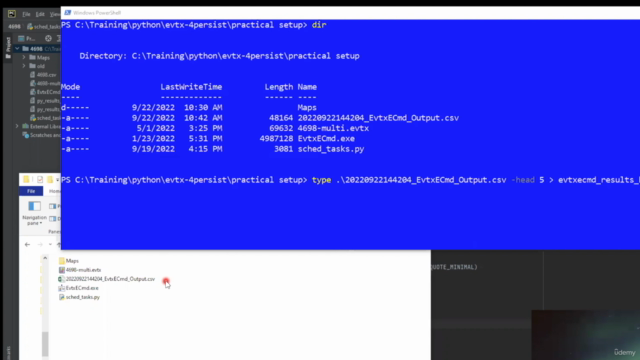SDF: Persistence Fast Triage

Why take this course?
Course Title: SDF: Persistence Fast Triage
Course Headline: Master the Art of Rapid Response with Practical Strategies for Security Incident Response
📚 Course Description:
In the ever-evolving landscape of cybersecurity, understanding and quickly identifying persistence mechanisms is critical to effective incident response. Persistence is often a key element in an attacker's playbook, designed to maintain access and achieve long-term objectives. Early detection of such mechanisms can significantly enhance your organization's security posture by enabling precise scoping, robust containment, comprehensive mitigation, and efficient remediation.
Why This Course?
- Practical Application: Learn through hands-on exercises with open-source tools and Python scripting, complemented by examples from Splunk SIEM.
- Comprehensive Coverage: Dive deep into the most commonly encountered artifacts in digital investigations, focusing on Windows event logs, scheduled tasks, and the Windows registry.
- Real-World Scenarios: Gain insights from actual case studies and learn how to apply the principles effectively.
- Ready-to-Use Resources: Benefit from pre-written Python scripts that you can adapt and deploy in real-time investigations.
What You'll Learn:
🔍 Artifact Analysis: Utilize a variety of artifacts to uncover persistence mechanisms quickly and efficiently. Each module will guide you through the process of identifying key elements and applying analysis strategy guidelines using readily available DFIR (Digital Forensics and Incident Response) tools and techniques.
📊 SIEM Integration: Learn how to leverage Splunk to build out SIEM logic for detecting persistence artifacts, enhancing your security posture with real-time alerts and data visualization.
Key Topics Covered:
-
Windows Event Logs Analysis:
- Explore services event logs to track anomalies and suspicious activities.
- Examine scheduled tasks log entries for potential malicious intent.
-
Windows Registry Investigation:
- Identify autoruns and other registry modification events indicative of persistent threats.
-
Python Scripting for DFIR:
- Write your own Python scripts to automate the detection and analysis of persistence mechanisms.
- Use pre-written, open-source scripts to accelerate your investigation process.
Who Should Attend?
- Cybersecurity Analysts
- Incident Responders
- Forensic Investigators
- SOC (Security Operations Center) Personnel
- IT Professionals with an interest in cybersecurity
🚀 Join the ranks of cybersecurity experts who can swiftly and effectively respond to security incidents. Enroll in SDF: Persistence Fast Triage today and equip yourself with the skills necessary for a robust incident response strategy. 🚀
By enrolling in this course, you'll not only enhance your understanding of persistent attacks but also improve your ability to quickly triage and respond to incidents. Don't let attackers maintain their foothold in your systems. Learn the strategies and techniques to detect and disrupt their persistence mechanisms with SDF: Persistence Fast Triage.
Course Gallery




Loading charts...